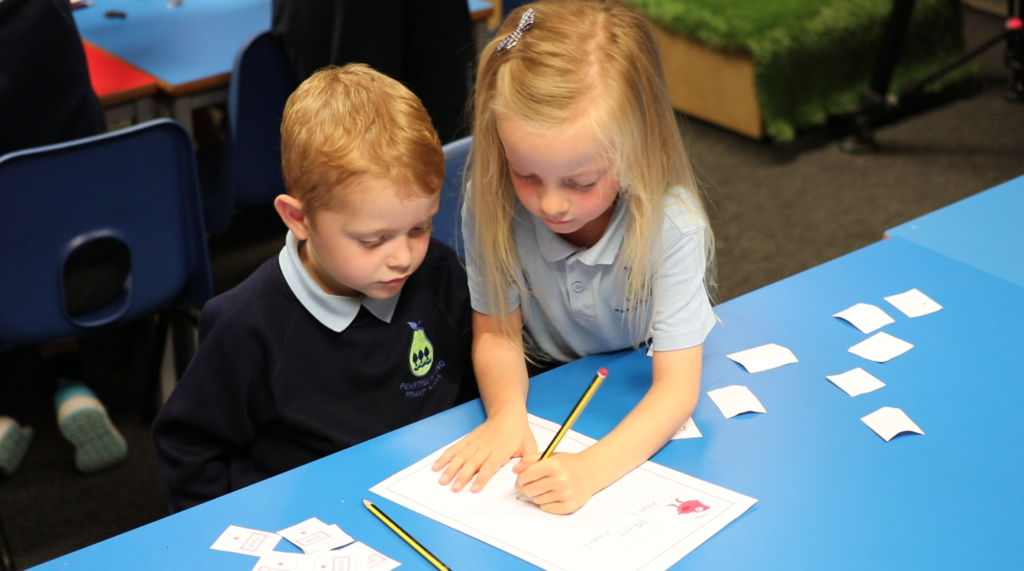Children in Year 1 across the UK will be preparing for the phonics screening test which will take place next week. You may have some questions about the phonics screening test so here is a brief guide to help you. We also have plenty of free resources to help too. If you are looking for fun and engaging strategies for use at home and in school, why not attend one of the free Monster Phonics webinars? Select a date and book your place here. If you are a school, take a free trial for full access to lessons and resources to help you to prepare.
What happens during the test?
The test is a relaxed and enjoyable experience. Your teachers will also have prepared your child who will be familiar with the format of the test.
We have a free interactive online Phonics Screening Test to help you practise. It’s very simple. Once you start the test, click the tick if your child reads the word and the cross if they do not. If you add your email at the end of the test, the test will automatically send you a breakdown of the results. This will help you identify any areas that would be useful for your child to recap. Our paper Phonics Screen provides additional practise. It has an example word for every aspect of phonics taught. Select a section and read with your child for further preparation.
Your child will be assessed on their reading of 40 words, 20 of which are real and 20 of which are nonsense ‘pseudo’ or ‘alien’ words. Pseudo words test your child’s ability to decode words without the support of any memory of words that they may have come across in reading.

Each page of the test has 4 words. Your child is expected to segment and blend each word on the page before moving on to the next page. Your child will go through the words at a pace that is right for them. Their teacher will allow them to take a break if they feel the focus has drifted. Once they have completed the test they go back to class. The test should last no more than between 5 and 20 minutes dependant on reading pace.
What is the pass rate?
The pass rate has been 32/40 since Phonics Screening began but this can change at any time.
Why are children tested at this stage?
The purpose of the phonics screening test is to confirm that all children have learned phonic decoding to the right age-appropriate standard.It keeps parents informed about their child’s progress in developing word-reading skills and ensure that any potential gaps in learning can be addressed.
When will we know the results?
This differs from school to school but often you will find out if your child passed around the same time end of year reports are released. This is to ensure all scores are confirmed by the examining body.
What can I do now?

My school uses Monster Phonics. Are the words colour-coded?
Although the words are not colour coded in the screening test, your child’s experience of Monster Phonics will help them to decode more effectively. As your child will have had exposure to the sound colours they will have started to internalise the graphemes and correspond them with a monster which is the most rewarding part for me. Although colour is not used within the test, children will still recognise a grapheme and associate it with the sound. For example, I sat with a child reading a non-colour coded text and they pointed to ‘ea’ in ‘beach’ and said, “Look it’s Green Froggy”. The colours may no longer be visible but the context remains.
What about the pseudo words in the Phonics Screening Test. How does Monster Phonics help children to read nonsense words?
The principle is the same. It is key to remember that there are lots of words that are new to your child which they come across every day. With Monster Phonics, the context and the principle is engrained and so it is then simply applied to words both familiar and unfamiliar, both real and pseudo.
Our free colour-coded real and nonsense word flashcards can be used in fun flashcard games and activities to help your children improve their phonics knowledge.
Will my child have time to think in the phonics screening?
There are many misconceptions around the screening and that it’s a pressurised test situation. Yes your child is in the room with their teacher looking at an official paper but to them, it’s a game; can you help me find all the monsters? It is at the teacher’s discretion if the pupil takes a break during the test and if they do they can take as long or as many breaks as they need on two conditions:
Should I be worried if they are not on track to pass?
Firstly I’m a strong believer that worrying is wasteful so if you fear that your child is not on track, utilise the tools around you to help. There are various ways to incorporate phonics/reading which you can read in a future blog.
If they are not on track to pass the government pass score, think about them getting the best score for them. If they make progress for themselves it’s still progress! They will have a chance to retake the screening and they should receive additional support to ensure passing the second time round is more achievable.
Further information about the Phonics Screen and how Monster Phonics works.